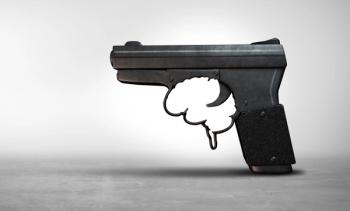
- Vol 39, Issue 8
A Personal and Psychiatric Jazz Riff on Racism
“Listening is hard work. It may take years. You may feel more injured than you are healed. You may be wiser, but the quintessential moment may elude you. Above all, you must listen with an open heart and be prepared to hold back against stereotypes of your racial identity as well as the identity of others.”
PSYCHIATRY & SOCIETY
A jazz riff is a musical phrase to grab onto during a given piece. The riff of this piece is antiracism, and it is a solo after 2 group improvisations: In prior Psychiatric Times™ articles, my colleagues and I presented multicultural views of how to
The Nature of Jazz
Believed to have originated in the late 19th century, using remnants of African music that had survived slavery, jazz truly came into its own in the 1920s. Its style was based on the democratic sharing of music via innovation and improvisation, in which musicians trusted the process and each other. Not only that, but it integrated the audience. It is like everyday life, with some structure and planning, but with much improvisation along the way. Sometimes the music swings; sometimes it screams. Sometimes the music is consonant; sometimes it is dissonant.
Mistakes in jazz are viewed as opportunities. This is partially what makes jazz unique and special, as other music types (eg, classical rock ’n’ roll, soul) does not embrace this approach. Again, this is like life, especially for a psychiatrist, where mistakes are opportunities to grow and learn.
In a great paradox, jazz turned the denied American dream for Black individuals into promises of equity, freedom, and cooperation, using those ideals to create a unique art form and way of life.3
However, jazz, too, was influenced by racism, including the lack of business control by Black musicians over their own music. Similarly, there has been a better appreciation of jazz and its universal language in Europe and Asia than in the United States. Authoritarian leaders do not like jazz, perhaps because it relies heavily on improvisation and thus is unpredictable. Interestingly, before the Soviet Union broke up in 1991, it—like Nazi Germany—tried to ban jazz. Thus, both in the United States and abroad, jazz became an underground freedom movement, with lovers of jazz calling it, “the healing force of the universe.”
The Search for Harmony and Empathy
One of the elements of jazz is harmony. In addition to its pure musical meaning, Merriam Websters defines harmony as “an interweaving of different accounts into a single narrative.” In many ways, to achieve a perfect harmony, one must have empathy. From my early years growing up in post-World War II US as a Jewish American (and all the baggage associated with it) through my teen years and later as I embarked on my career in medicine, as I fell in love with jazz, I was drawn to the idea of harmony and empathy.
Finding the Form: Cultural Psychiatry
Like there are 5 elements—rhythm, harmony, form, improvisation, and sound—in jazz, I found my education on racism came mainly from 5 sources, each bringing a new part of the melody and music.
1. Our clinic patients. I learned a lot from patients, including who they preferred to be their clinician and why. Sometimes Black patients preferred a
2. The field of anthropology. Our department’s anthropologist taught us the value of our patients’ cultures.
3. My clinic coleader and staff. My award-winning clinic coleader was Black, and our staff was multicultural. Together we found our rhythms and a beautiful harmony, as we worked like a jazz group of musicians. (Some of us still gather annually for lunch).
4. A thoughtful resident. I taught—and was taught by—a Black male resident. Together, we developed the first cultural psychiatric residency educational model, based on personal cultural presentations of one’s
5. The diverse city of Houston. At the time, the struggle for integration in Houston was in full swing. Eldrewey Stearns led the civil rights movement in that city.6 Later Thomas R. Cole, PhD, McGovern Chair in Medical Humanities and director of the McGovern Center for Humanities and Ethics at The University of Texas Health Science Center at Houston, and Stearns’ biographer reflected on what he learned from those conversations with Stearns6:
"Listening is hard work. It may take years. You may feel more injured than you are healed. You may be wiser, but the quintessential moment may elude you. Above all, you must listen with an open heart and be prepared to hold back against stereotypes of your racial identity as well as the identity of others."
Riffs on Racism
At this stage of my life and career, I have some conclusions—or should I say riffs—about racism,
1. Racism is part of all the isms, phobias, and antis—an outcome of our inborn tendency to fear the other, especially when we feel threatened and want more power. Because the powers that be often try to divide and control groups that are discriminated, we need coalitions to protect and support them. The same is true in jazz, where musicians often accompany one another.
2. Sometimes it is necessary to lead and sometimes it is necessary to follow, just as some times you are the soloist and sometimes you support the soloist. As much as possible, the leadership can and should come from Black Americans. However, efforts are unlikely to sufficiently succeed unless there are trusting coalitions and allies.
3. Jazz is an ongoing model for Black leadership, integration, improvisation, democracy, and beauty.
4. Historical trauma is multigenerational and hard to break due to epigenetic transmission, continued structural racism, and quests for power.
5. Posttraumatic growth and
6. The values that were normative and acceptable at a previous time may no longer be so. Understand the time-based action, but also accept the necessity of change and development. Evolve like a musical jazz piece, and allow for improvisation.
7. Stop using divisive terminology. As I heard the jazz great Wynton Marsalis say, use different hues to describe skin colors.
8. Education that includes cultural identity self-exploration in a psychologically safe environment is necessary in psychiatric training, continuing education, and more generally in the public.
9. Although
10. Consider the possibility of a Jungian collective unconscious value of musical healing coming out of our common African origins and eventually transforming into jazz.8
In clinical psychiatry, we do not only need and rely upon research-based publications, but also benefit from individual case studies. Similarly, in racism and psychiatry, we need expert-based perspectives and individual narratives. We each automatically have our own racial stories. Examine and share your related lived experiences. Mine was primed by early positive experiences and the appreciation of jazz music.
The jazz way toward antiracism is an African American-based communication of structure and improvisation for cooperation, innovation, and healing. It is time we make beautiful music together.
Dr Moffic is an award-winning psychiatrist who has specialized in the cultural and ethical aspects of psychiatry. A prolific writer and speaker, he received the one-time designation of Hero of Public Psychiatry from the Assembly of the American Psychiatric Association in 2002. He is an advocate for mental health issues relate to climate instability, burnout, Islamophobia, and anti-Semitism for a better world. He serves on the Editorial Board of Psychiatric Times™.
References
1. Moffic HS, Bailey R, Clark F, et al.
2. Moffic HS, Bailey R, McLean A, Okamoto T.
3. Clark G. Civic Jazz. University of Chicago Press; 2015.
4. Moffic HS, Kendrick E, Lomax J, Reid K.
5. Moffic HS, Kendrick EA, Reid K, Lomax J.
6. Cole TR. No Color is My Kind: The Life of Eldrewey Stearns and the Integration of Houston. University of Texas Press; 1997.
7. Shim RS.
8. Bynum E. Our African Unconscious: The Black Origins of Mysticism and Psychology. Inner Traditions; 2021. ❒
Articles in this issue
over 3 years ago
Work-Life Balance: What Is It and How Do We Attain It?over 3 years ago
Understanding and Addressing Physician Substance Use and Misuseover 3 years ago
Physician, Heal Thyself: An Introductionover 3 years ago
Comorbidity Complexities: Patterns and Implicationsover 3 years ago
Effects of Nutrition on Mood Variability in Bipolar Disorderover 3 years ago
How to Improve Systemic Problems in Mental Health Careover 3 years ago
Skilcraft Visible Man Anatomy Kit, 1960Newsletter
Receive trusted psychiatric news, expert analysis, and clinical insights — subscribe today to support your practice and your patients.













